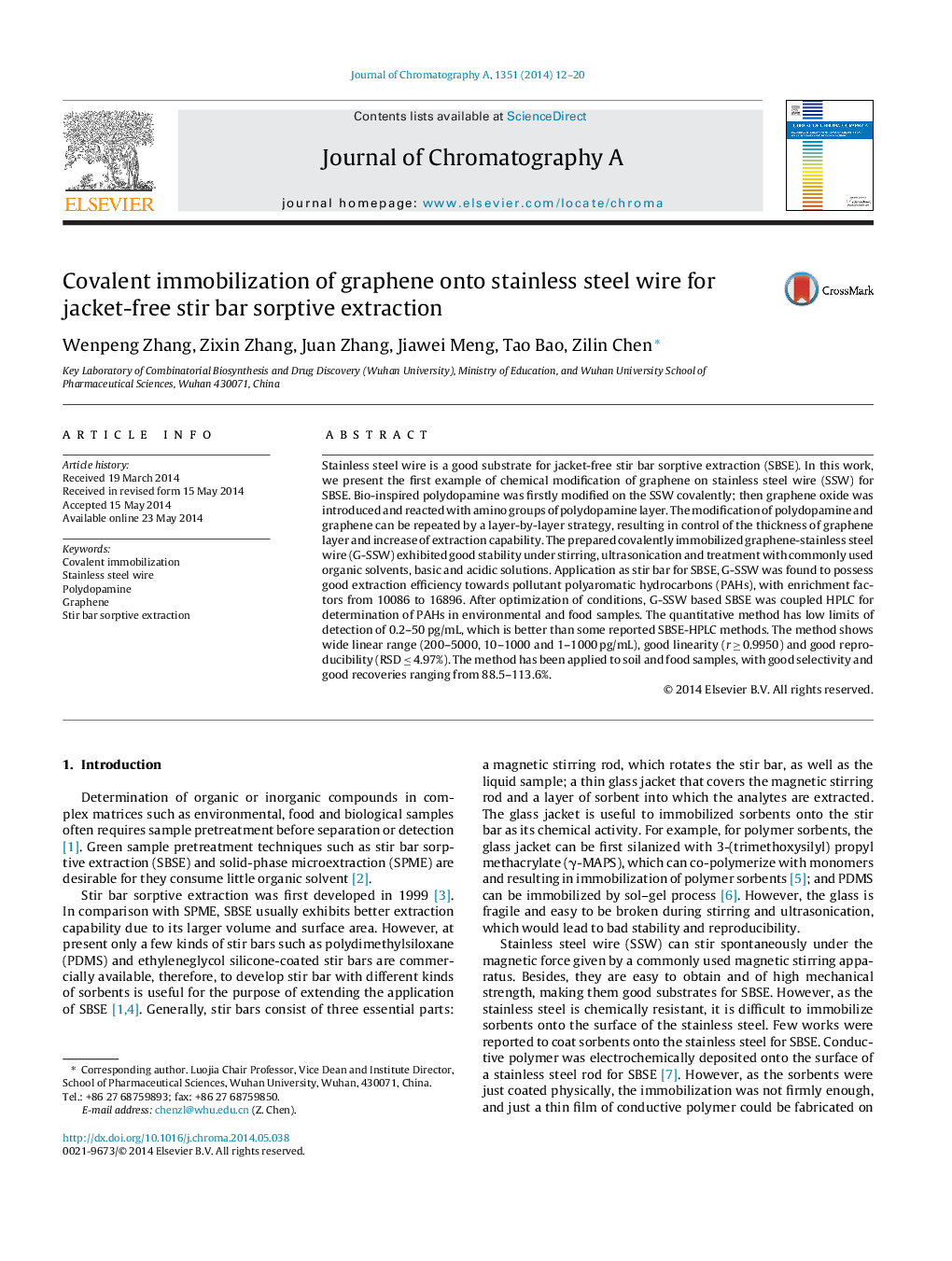| Article ID | Journal | Published Year | Pages | File Type |
|---|---|---|---|---|
| 1199811 | Journal of Chromatography A | 2014 | 9 Pages |
•A novel strategy for covalent immobilization of the sorbent onto stainless steel for SBSE.•The stability of the sorbent was improved by covalent immobilization.•The thickness of the immobilized graphene layer was controllable by layer-by-layer strategy.•G-SSW showed high enrichment efficiency towards PAHs.•G-SSW showed good clean-up efficiency in soil and food samples.
Stainless steel wire is a good substrate for jacket-free stir bar sorptive extraction (SBSE). In this work, we present the first example of chemical modification of graphene on stainless steel wire (SSW) for SBSE. Bio-inspired polydopamine was firstly modified on the SSW covalently; then graphene oxide was introduced and reacted with amino groups of polydopamine layer. The modification of polydopamine and graphene can be repeated by a layer-by-layer strategy, resulting in control of the thickness of graphene layer and increase of extraction capability. The prepared covalently immobilized graphene-stainless steel wire (G-SSW) exhibited good stability under stirring, ultrasonication and treatment with commonly used organic solvents, basic and acidic solutions. Application as stir bar for SBSE, G-SSW was found to possess good extraction efficiency towards pollutant polyaromatic hydrocarbons (PAHs), with enrichment factors from 10086 to 16896. After optimization of conditions, G-SSW based SBSE was coupled HPLC for determination of PAHs in environmental and food samples. The quantitative method has low limits of detection of 0.2–50 pg/mL, which is better than some reported SBSE-HPLC methods. The method shows wide linear range (200–5000, 10–1000 and 1–1000 pg/mL), good linearity (r ≥ 0.9950) and good reproducibility (RSD ≤ 4.97%). The method has been applied to soil and food samples, with good selectivity and good recoveries ranging from 88.5–113.6%.
